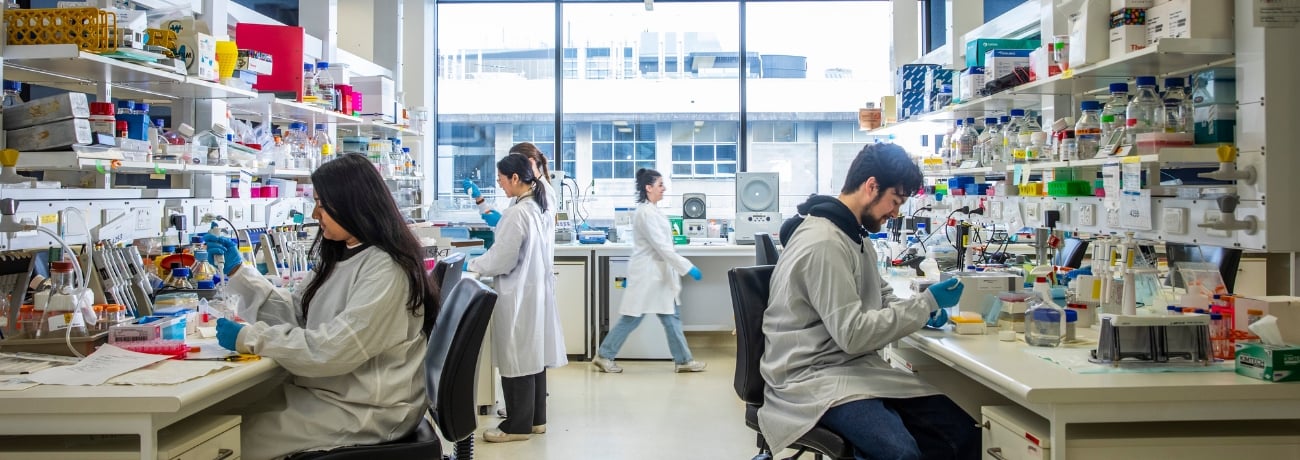Associate Professor David Abbott hunches forwards in his office chair, mousing and clicking around his computer screen with his renowned intensity and eagerness.
“Look at this! This is really cool…” he enthuses as he brings up two images of squiggly lines jiggling across the screen. In the ‘before’ image, the jumbled traces of the brain’s electrical activity dance wildly. In the ‘after’, the lines are more serene, with the exception of a few jagged peaks arising like rocky outcrops from an otherwise calm ocean.
David is excited for a reason – together with Professor Graeme Jackson and the epilepsy imaging team, they are the only researchers in the world producing such accurate traces of people’s brain activity while they lie inside an MRI scanner. “The end goal is to help our epilepsy clinicians diagnose patients faster, more accurately, and to develop new treatments targeting certain epilepsies that affect specific brain networks” says David.
So how has David developed such detailed images?
By eliminating the tiniest movements that interfere with the brain signals obtained, David is producing images of exquisite clarity. Even movements as tiny as a patient’s pulse can obscure the results.
David corrects the images using a specialised set of three motion detection loops placed on the patient’s head, one in each axis, in addition to the standard recording electrodes on the electroencephalogram cap.
The specialised carbon fibre loops, which measure voltage changes induced by MRI scanners strong magnetic field, were designed and constructed by Florey biomedical engineer Steven Fleming.
By removing the spurious movement effects from the patient’s brain’s electrical trace, the team can much more accurately pinpoint the exact time of an abnormal electrical discharge that might be the crucial clue in diagnosing a patient’s epilepsy.
Commercial partners are interested in this innovative technology in the hope that the rest of the world can catch up and begin to improve their epilepsy imaging.
Reducing seizure frequency and severity should result in much better long term outcomes for these patients and their families
When diagnosing someone with epilepsy, the brain’s abnormal electrical discharges are only one clue. The team also simultaneously scan the brain’s blood oxygenation, so called functional MRI, using scans acquired on the Siemens 3T Trio scanner at the Florey node of the National Imaging Facility (NIF). This gives them a precise location for the activity’s source, either focal, or perhaps in a particular brain network.
One such ‘network’ epilepsy is Lennox Gestault Syndrome.
Lennox–Gastaut Syndrome (LGS) is a severe, disabling epilepsy, characterized by frequent seizures. The condition typically begins early in life, leaving children severely disabled with recurring seizures throughout their adult life. LGS is hard to treat, and the seizures often result in developmental regression and cognitive impairment. It is not uncommon for middle-aged patients to require full-time care in a nursing home.
PhD candidate Aaron Warren, along with Austin Health neurologist John Archer have been using the motion-corrected simultaneous fMRI/EEG developed by A/Prof Abbott’s team to scan LGS patients. They believe they have identified a structure deep in the brain that may be responsible for the seizures.
Using a common treatment for Parkinson’s disease, so-called deep brain stimulation, the team are planning a clinical trial to insert stimulating electrodes deep into patient’s brains, with the hypothesis that activating this structure will inhibit the brain’s aberrant electrical activity.
Prof Graeme Jackson, head of the Florey’s advanced epilepsy imaging team, says “Reducing seizure frequency and severity should result in much better long term outcomes for these patients and their families. We really think we’re pushing the boundaries of how good this technology can get, which means we can treat more people with greater success.”
